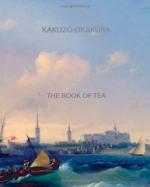
|
| Name: _________________________ | Period: ___________________ |
This test consists of 5 multiple choice questions, 5 short answer questions, and 10 short essay questions.
Multiple Choice Questions
1. Zennism believes that nothing is real except what?
(a) Earth.
(b) God.
(c) Mankind.
(d) The human mind.
2. The editor sees ___________ distinct sides of Okakura which he would alternately exhibit.
(a) Three.
(b) Six.
(c) Four.
(d) Five.
3. Lao Tzu's famous metaphor for this train of thought is what?
(a) The vacuum.
(b) Nature.
(c) The hole.
(d) The dance.
4. In 1890 the two split, perhaps due to what, and the fact that Okakura was outdoing his master?
(a) Strong egos in both men.
(b) Illness.
(c) Differing beliefs.
(d) Different life paths.
5. Modernization came with a price, namely, the destruction of what?
(a) The welfare system in Japan.
(b) The power of the empire.
(c) The health of the Japanese people.
(d) The 'old' or traditional way of Japanese living.
Short Answer Questions
1. Have Westerners embraced tea fully?
2. Tea was known in China since when?
3. What era followed this era?
4. What are these eras?
5. How did tea grew in popularity?
Short Essay Questions
1. For what is tea known?
2. Who began modernization in Japan? What did modernization do to Japan, according to the author?
3. Did all Japanese accept modern, Western attitudes and behaviors? How do you know this?
4. What was the opinion of tea?
5. What does the author say about Tao and Taoism?
6. What happened during the Mongol invasion of China?
7. How does Zennism oppose Buddhism?
8. What is the chief contribution of Taoism to Asiatic life? Describe this.
9. What did Fenollosa and Okakura do together? How and why did their travels together end?
10. When did tea first arrive in the Western world? Who brought it?
|
This section contains 832 words (approx. 3 pages at 300 words per page) |

|




